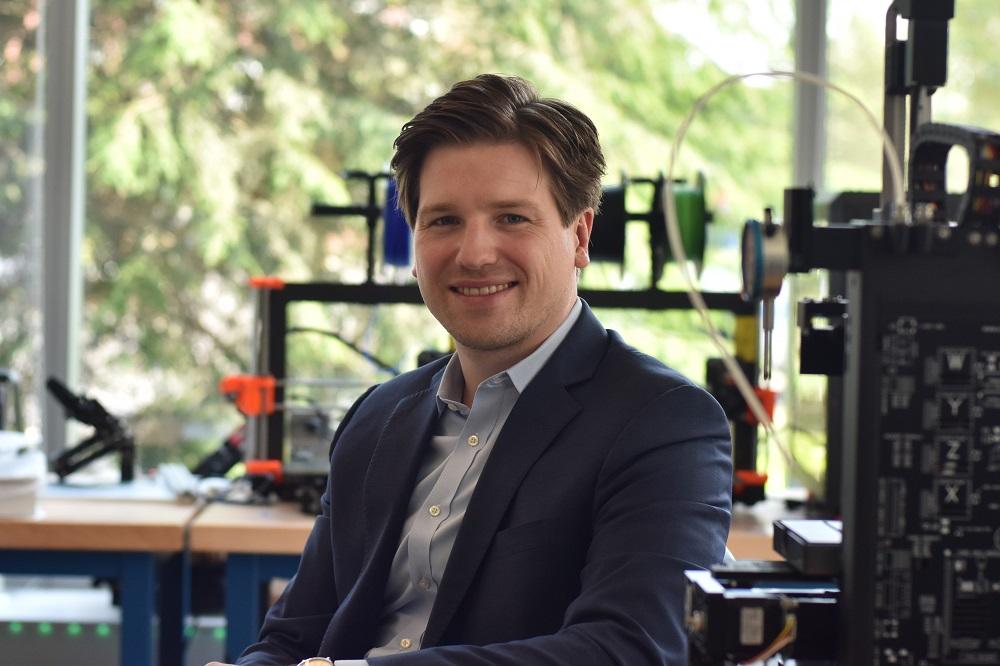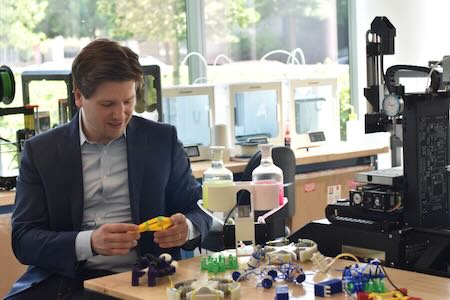Worcester Polytechnic Institute (WPI) researcher Markus Nemitz has received a $599,815 CAREER Award from the National Science Foundation to develop a new class of low-cost, customizable 3D printable soft robots. Capable of traversing challenging environments, it is hoped that these robots will eventually be used in search-and-rescue operations.
Soft robots are constructed from highly malleable materials, enabling flexible movements similar to living organisms that traditional robots can’t replicate. This makes soft robots particularly well suited to search-and-rescue missions, where they may be required to swim, crawl, climb, and dive through confined spaces.
Nemitz’s research will focus on the development of small and flexible 3D printed robots with integrated fluidic circuits that can be rapidly produced and customized for specific disaster conditions. The robots will be tested in a miniaturized model replicating parts of the Tham Luang cave in Thailand, where flooding trapped 12 youth soccer players and their coach in 2018.
Having started on August 1st, the research project is expected to run until July 31, 2028.
“Disasters often demand unique, specialized responses, such as was required for the Tham Luang cave crisis,” commented Nemitz, who is an assistant professor in WPI’s Department of Robotics Engineering.
“There lies immense potential in the development of small robots that are quickly fabricated from soft, flexible materials. These robots can significantly aid rescue efforts by exploring areas that pose potential hazards to humans or are otherwise inaccessible, including earthquake debris, flooded regions, and even nuclear accident sites.”

Developing 3D printed search-and-rescue robots
Through this project, Nemitz will work to develop novel principles for robot design and fabrication, combining mechanical intelligence, 3D printed fluidic circuits, and flexible electronics.
Mechanical intelligence uses the robot’s geometries and material properties to adapt to unexpected conditions, significantly reducing the computing capacity required by the robots.
Fluidic circuits use the movement of fluid in flexible channels within the robot to convert signals from external stimuli into commands that control the robot’s functions. These circuits can be built directly into the body of the robots, and don’t lose functionality when bent or twisted. Nemetz aims to develop 3D printed robots with integrated fluidic state machines that respond to fluidic sensors, and control fluidic actuators. As such, the project will seek to develop a new class of complementary fluidic gates and electro-fluidic memory elements.
Flexible and stretchable electronics, possessing a high tolerance for dynamic deformation, will also be employed. The flexible electronic circuits and electro-fluidic interconnects will be integrated into the robots using conductive inks and elastomers. The role of electronics within the robots will be limited to selecting fluidic functionalities, functionalizing fluidic sensors, and writing programs into fluidic memory.
Commercial 3D printers and elastomeric filaments will be used to produce the robots. To ensure their feasibility, Nemitz will evaluate the time taken to design and 3D print the robots. The robots’ ability to reach designated targets within the lab-based model cave system will also be assessed.
“Equipped with sensors such as microphones and cameras, these robots will enhance the capabilities of rescuers, especially during natural disasters,” explained Nemitz. “To ensure a dynamic and rapid response to emergencies, we must continually innovate and develop new technologies. Robotics is at the forefront of this development.”
As part of this project, Nemitz will also launch a hands-on robotics summer camp exclusively for female high school students in Worcester County. This aligns with WPI’s plan to launch a new undergraduate course on 3D printable robots.

3D printing and robotics
The WPI research project is not the first time 3D printing has been leveraged to develop robots for use in challenging environments. In February 2021, it was announced that metal and carbon fiber 3D printer manufacturer Markforged was part of a collaborative effort to develop fully autonomous robots capable of traversing underground environments during planetary exploration.
The robot was developed as part of the Defense Advanced Research Projects Agency’s Subterranean Challenge (DARPA). Markforged’s 3D printers enabled its CoSTAR team to apply quick iterations and fixes to their autonomous robot at the point of need throughout the competition.
Additionally, back in 2019 researchers at NASA leveraged 3D printing to assess the viability of using soft robotics for space exploration and assembly. Chuck Sullivan and Jack Fitzpatrick, interns at NASA’s Langley Research Center in Hampton, Virginia, used 3D printing to develop a soft robotic actuator. This component is key to animating and controlling a robot’s moving parts.
Subscribe to the 3D Printing Industry newsletter to keep up to date with the latest 3D printing news. You can also follow us on Twitter, like our Facebook page, and subscribe to the 3D Printing Industry Youtube channel to access more exclusive content.
Are you interested in working in the additive manufacturing industry? Visit 3D Printing Jobs to view a selection of available roles and kickstart your career.
Featured image shows Markus Nemitz. Photo via Worcester Polytechnic Institute.


